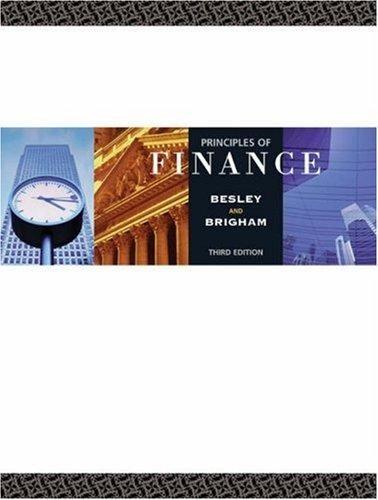Answered step by step
Verified Expert Solution
Question
1 Approved Answer
Please help me it's one problem with three parts i have no more question for today thats why i did not divided it in 3
Please help me it's one problem with three parts i have no more question for today thats why i did not divided it in 3 but since its just one pwoblem please help me
thank you so much i will make sure u get the like



Please help me
Light emitting diodes (LED) light bulbs have become required in recent years, but do they make financial sense? Suppose a typical 60-watt incandescent light bulb costs $.46 and lasts 1,000 hours. A 15-watt LED, which provides the same light, costs $3.45 and lasts for 12,000 hours. A kilowatt-hour of electricity costs $.122. A kilowatt-hour is 1,000 watts for 1 hour. If you require a return of 11 percent and use a light fixture 500 hours per year, what is the equivalent annual cost of each light bulb? (A negative answer should be indicated by a minus sign. Do not round intermediate calculations and round your answers to 2 decimal places, e.g., 32.16.) Light emitting diode (LEDs) light bulbs have become required in recent years, but do they make financial sense? Suppose a typical 60 -watt incandescent light bulb costs $.55 and lasts for 1,000 hours. A 15 -watt LED, which provides the same light, costs $3.90 and lasts for 12,000 hours. A kilowatt hour of electricity costs $.131. A kilowatt-hour is 1,000 watts for 1 hour. However, electricity costs actually vary quite a bit depending on location and user type. An industrial user in West Virginia might pay $.04 per kilowatt-hour whereas a residential user in Hawaii might pay $.25. You require a return of 11 percent and use a light fixture 500 hours per year. What is the break-even cost per kilowatt-hour? (Do not round intermediate calculations and round your answer to 6 decimal places, e.g., 32.161616 .) Light emitting diode (LED) light bulbs have become required in recent years, but do they make financial sense? Suppose a typical 60 -watt incandescent light bulb costs $.50 and lasts for 1,000 hours. A 15 -watt LED, which provides the same light, costs $3.65 and lasts for 12,000 hours. A kilowatt-hour is 1,000 watts for 1 hour. Suppose you have a residence with a lot of incandescent bulbs that are used on average 500 hours a year. The average bulb will be about halfway through its life, so it will have 500 hours remaining (and you can't tell which bulbs are older or newer). If you require a return of 9 percent, at what cost per kilowatt-hour does it make sense to replace your incandescent bulbs today? ( A negative answer should be indicated by a minus sign. Do not round intermediate calculations and round your answer to 6 decimal places, e.g., 32.161616.) Step by Step Solution
There are 3 Steps involved in it
Step: 1

Get Instant Access to Expert-Tailored Solutions
See step-by-step solutions with expert insights and AI powered tools for academic success
Step: 2

Step: 3

Ace Your Homework with AI
Get the answers you need in no time with our AI-driven, step-by-step assistance
Get Started


